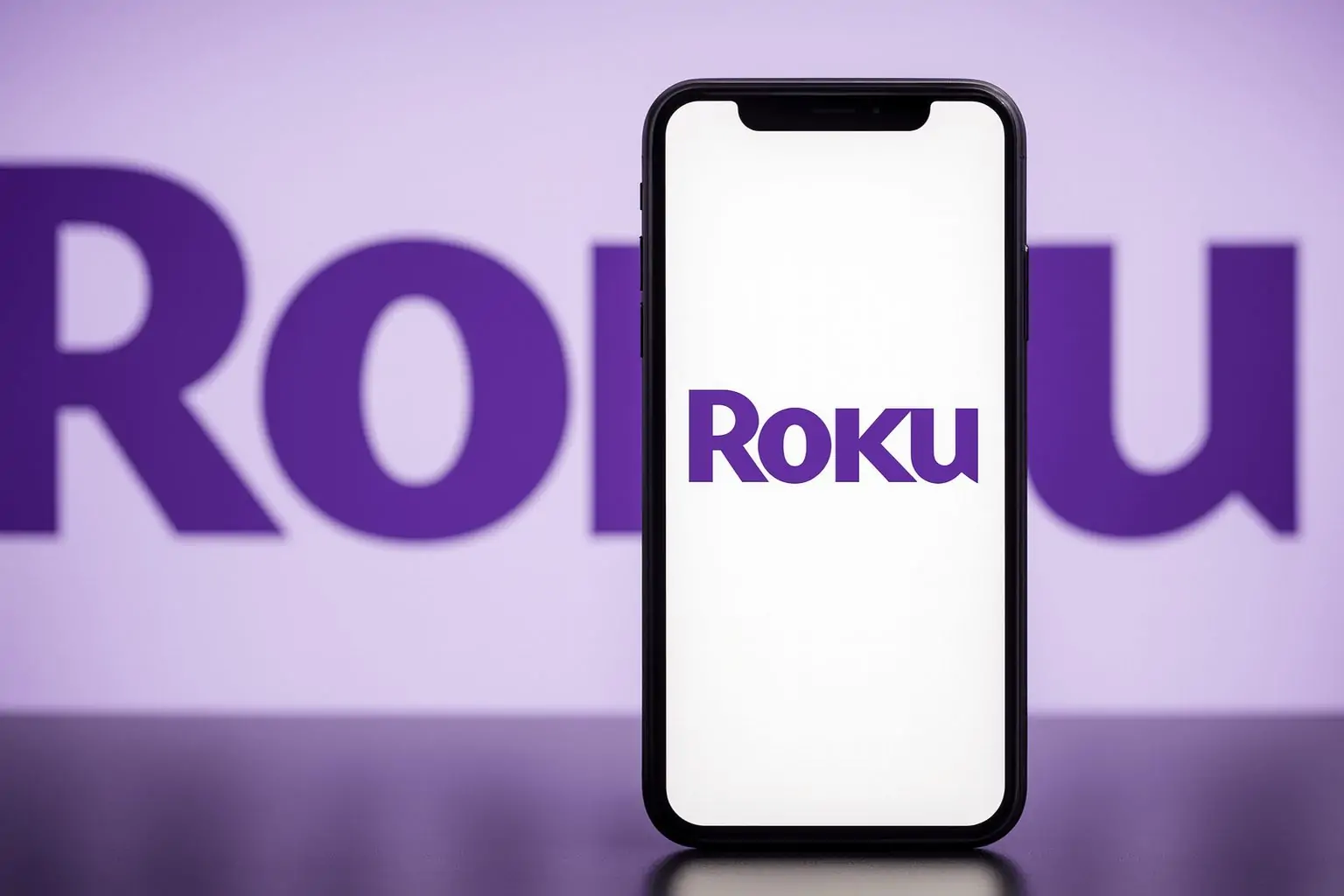Roku stock is back in focus after a choppy November, with investors weighing strong earnings and advertising growth against insider selling and ongoing volatility in streaming names.
As U.S. markets are closed today (Saturday, November 22, 2025), the latest data for Roku Inc. (NASDAQ: ROKU) comes from Friday’s close.
Roku stock price snapshot for today
Roku shares closed Friday, November 21 at $93.32, up 2.56% on the day. The stock traded between $90.55 and $94.53 with volume of about 2.62 million shares, in line with its recent activity. [1]
Over key time frames, Roku’s performance looks like this: [2]
- 5-day performance: about –3.7%
- 1‑month performance: about –2.8%
- Year‑to‑date 2025:+25.5%
- 1‑year change:+34.9%
- 5‑year change: roughly –65%, reflecting the boom‑and‑bust cycle typical of high‑growth tech and streaming stocks
Roku now trades around 20% below its 52‑week high of $116.66, set on October 31 after its Q3 earnings spike, but roughly 78% above its 52‑week low of $52.43 from April 7. [3]
With a beta around 3.1, Roku remains a high‑volatility stock, prone to outsized swings compared with the broader market. [4]
Earnings: Roku turns the profit corner in Q3 2025
The key fundamental story behind Roku stock right now is its Q3 2025 earnings, reported on October 30:
- Revenue: about $1.21 billion, up 14% year over year
- Platform revenue (ads, subscriptions, licensing): roughly $1.06 billion, up 17% YoY
- EPS:$0.16, beating the $0.07 consensus by $0.09
- First positive operating income since 2021, marking an important profitability milestone [5]
Management also raised its outlook:
- For Q4 2025, Roku guides for around $1.35 billion in net revenue, about 12% YoY growth
- Platform revenue is expected to grow around 15% YoY in Q4 with gross margin near 52%
- Updated full‑year outlook calls for platform revenue of about $4.11 billion and roughly $395 million in adjusted EBITDA, reflecting improving monetization and cost discipline [6]
Taken together, this quarter solidified a narrative shift from “streaming hyper‑growth with heavy losses” to “slower but more profitable growth”. That shift is a major reason analysts remain constructive even after Roku’s strong run in 2025.
A scale story: 90 million households and a bigger slice of TV viewing
Roku’s investment case continues to hinge on scale in connected TV (CTV):
- Roku surpassed 90 million streaming households in early January 2025, and its TV operating system is the #1 selling smart‑TV OS in the U.S., Canada and Mexico. [7]
- Data from Nielsen shows streaming overall now accounts for nearly half of all U.S. TV viewing, surpassing the combined share of traditional broadcast and cable for the first time in 2025. [8]
- Within that, The Roku Channel has emerged as a major free, ad‑supported streaming (FAST) service, accounting for around 2.8% of all U.S. TV usage and over 6% of U.S. TV streaming time in recent Gauge reports. [9]
For Roku, each additional household on its platform is less about hardware revenue and more about high‑margin advertising and subscription economics.
That dynamic was already visible in Q2 2025, when Roku: [10]
- Beat Wall Street’s revenue expectations with about $1.11 billion in sales
- Grew platform revenue 18% year over year
- Announced a $400 million stock buyback program
Q3’s results extended that trend with double‑digit platform growth and a return to operating profitability.
New growth levers: Amazon Ads, Howdy and holiday hardware
Several strategic moves in 2025 are shaping how investors value Roku’s long‑term opportunity:
1. Amazon Ads partnership boosts ad reach
Roku’s strategic advertising partnership with Amazon Ads was one of the year’s biggest catalysts. The tie‑up allows advertisers using Amazon’s demand‑side platform (DSP) to reach about 80 million U.S. connected‑TV households across The Roku Channel, Prime Video and other major streaming apps, with early results showing:
- Around 40% increase in unique viewer reach
- Roughly 30% reduction in ad repetition
The deal helped drive a double‑digit surge in Roku’s share price when it was announced and reinforced the view that Roku can partner with, not just compete against, other streaming heavyweights. [11]
2. Howdy: Roku’s ultra‑cheap ad‑free streamer
In August 2025, Roku launched Howdy, a new ad‑free subscription streaming service priced at just $2.99 per month. The service offers a library of films and series, including titles from Lionsgate and Warner Bros., along with Roku Originals. [12]
Roku has positioned Howdy as a low‑cost supplement rather than a Netflix competitor, but it potentially:
- Deepens user engagement in the Roku ecosystem
- Adds another subscription revenue stream
- Gives Roku more flexibility in how it mixes free, ad‑supported and paid, ad‑free viewing options
How quickly Howdy scales will be an important metric to watch in upcoming quarters.
3. Roku‑branded TVs and Black Friday tailwinds
Roku is also pushing its own branded smart TVs, including its 2025 Pro Series mini‑LED models. Ahead of Black Friday, major retailers have been discounting Roku’s 65‑inch Pro Series TV by roughly a third, to under $800, positioning it as a high‑spec but affordable flagship set. [13]
Strong holiday hardware sales don’t move the earnings needle as much as advertising does, but they matter because every new Roku TV:
- Expands the company’s installed base
- Locks households into the Roku OS
- Creates more inventory for home‑screen ads, sponsorships and content discovery units
Why Roku stock has been so volatile this month
Despite solid fundamentals, Roku’s share price has swung sharply in November.
After spiking to its 52‑week high above $116 in the immediate aftermath of Q3 earnings, ROKU pulled back more than 14% between November 12 and November 20. [14]
Several factors have contributed:
CEO share sale rattles sentiment
On November 13, ROKU shares fell about 5.6% in the morning session after a filing showed CEO and founder Anthony J. Wood sold 49,888 shares, worth roughly $5.2 million. The trades were executed under a pre‑arranged 10b5‑1 trading plan, but sizeable insider sales often make investors nervous, especially after a big rally. [15]
President of Roku Media trims holdings
Separately, a recent filing showed Roku Media President Charles Collier sold around $1.36 million worth of shares at prices just below $95 as part of another 10b5‑1 plan, although he also exercised options and still retains a notable stake. [16]
These moves come against a backdrop of broader insider selling: one analysis counted 18 insider sale transactions and no insider buys over the last three months. [17]
Institutional buying offsets insider sales
On the other side of the ledger, a fresh 13F filing from Tableaux LLC disclosed a new position representing about 1.3% of Roku’s outstanding shares, adding to already high institutional ownership — roughly 86% of the float is held by hedge funds and other institutions. [18]
The tug‑of‑war between insider selling and institutional accumulation is part of why Roku’s share price has been jumping around so violently, even as the underlying business trends are improving.
Fundamentals and valuation: still a high‑beta growth bet
From a fundamentals perspective, Roku looks like a transition story:
- Revenue growth: 3‑year revenue CAGR around 13–14%, with double‑digit growth continuing in 2025. [19]
- Margins: Gross margin near 44%, but trailing net margin about –0.6% and operating margin about –2.4%, showing the company is just emerging from years of losses. [20]
- Balance sheet: Current ratio around 2.7 and a debt‑to‑equity ratio near 0.2, pointing to solid liquidity and modest leverage. [21]
On valuation:
- Price‑to‑sales (P/S) is about 3.1
- Price‑to‑book (P/B) around 5.3
- Trailing earnings are still negative, but Wall Street expects Roku’s EPS to swing from a loss of roughly $0.30 per share to positive $0.61 next year, reflecting confidence in margin expansion. [22]
For many investors, Roku sits in the bucket of “expensive on trailing numbers, potentially reasonable on future earnings if management delivers.”
What Wall Street is saying about Roku stock
Despite the recent pullback, analyst sentiment on ROKU remains broadly positive:
- Across about 25–30 analysts, Roku’s average 12‑month price target hovers around $110–$113, versus Friday’s $93.32 close — implying roughly 18–20% upside. [23]
- Consensus ratings from multiple platforms characterize Roku as a “Buy” or “Moderate Buy”, with a majority of analysts in the Buy camp and only a small minority rating it Sell. [24]
- Targets are wide, with highs around $145 and lows in the $70–$75 range, reflecting disagreement over how fast Roku can scale profits and how competitive the streaming landscape will remain. [25]
In shorter‑term trading notes, some analysts highlight that Roku’s RSI near the mid‑30s suggests the stock is approaching oversold territory after its mid‑November slide — a technical backdrop that partly explains Friday’s bounce. [26]
Key risks to the Roku story
Even bullish investors acknowledge several risks that could weigh on Roku stock:
- Competitive pressure in streaming and CTV ads
Roku faces intense competition from TV OS rivals (Google TV, Amazon’s Fire TV, Samsung) and from other ad platforms (The Trade Desk, YouTube, Netflix’s ad tier). Any loss of share or pricing power in CTV advertising could slow platform revenue growth. - Ad‑market cyclicality
A weaker macro environment or pullbacks in brand advertising budgets can quickly hit Roku’s high‑margin platform revenue, especially in non‑political quarters. - High volatility and sentiment swings
With a beta above 3 and a history of violent drawdowns, ROKU remains a stock where headlines, earnings surprises and insider trades can trigger big one‑day moves in either direction. [27] - Execution on new initiatives
Howdy, sports content, new ad formats and international expansion all offer upside, but also require ongoing investment. If subscriber or engagement trends disappoint, investors could reassess Roku’s long‑term profit potential.
What to watch next for Roku stock
Looking ahead from today, November 22, 2025, investors in Roku will be focused on:
- Holiday‑quarter results (Q4 2025): Hardware sales, ad growth and the impact of Black Friday promotions on Roku’s installed base. [28]
- Platform revenue trends: Whether Roku can sustain or accelerate mid‑teens growth in its high‑margin platform segment into 2026, as management has suggested. [29]
- Early traction for Howdy: Subscriber numbers, content additions and potential international expansion of the ultra‑cheap, ad‑free service. [30]
- Updates on the Amazon Ads partnership and other DSP integrations: Any data showing improved ad performance, higher fill rates or expanded reach. [31]
- Additional insider or institutional moves: New Form 4 filings and 13F updates will remain a sentiment driver given recent sales and fresh hedge‑fund buying. [32]
Bottom line
Roku stock today sits in the middle of its recent range: well off the highs it touched after Q3 earnings, but still significantly higher than where it started 2025.
The bullish case leans on:
- Rapidly growing streaming share of TV viewing
- Roku’s scale — 90+ million streaming households and a leading TV OS
- Strong platform revenue growth and a recent return to operating profitability
- New growth levers like the Amazon Ads partnership and the Howdy streaming service
The bearish or cautious view focuses on:
- High valuation relative to still‑thin profits
- Heavy volatility and sensitivity to headlines
- Insider selling and the possibility that expectations for 2026–2027 margins are too optimistic
For now, Wall Street’s consensus tilts positive, with analysts generally seeing upside over the next 12 months — but Roku remains a high‑risk, high‑beta CTV and streaming play, not a low‑drama value stock. Anyone considering ROKU should weigh their own risk tolerance and time horizon carefully and, if needed, consult a qualified financial advisor before making investment decisions.
References
1. www.marketbeat.com, 2. www.marketbeat.com, 3. www.investing.com, 4. www.gurufocus.com, 5. www.adexchanger.com, 6. image.roku.com, 7. newsroom.roku.com, 8. www.nielsen.com, 9. en.wikipedia.org, 10. www.reuters.com, 11. www.investors.com, 12. en.wikipedia.org, 13. www.techradar.com, 14. www.marketbeat.com, 15. markets.financialcontent.com, 16. www.investing.com, 17. www.gurufocus.com, 18. www.marketbeat.com, 19. www.gurufocus.com, 20. www.gurufocus.com, 21. www.gurufocus.com, 22. www.gurufocus.com, 23. www.marketbeat.com, 24. www.tipranks.com, 25. www.marketbeat.com, 26. www.gurufocus.com, 27. www.gurufocus.com, 28. image.roku.com, 29. www.adexchanger.com, 30. en.wikipedia.org, 31. www.investors.com, 32. www.marketbeat.com







